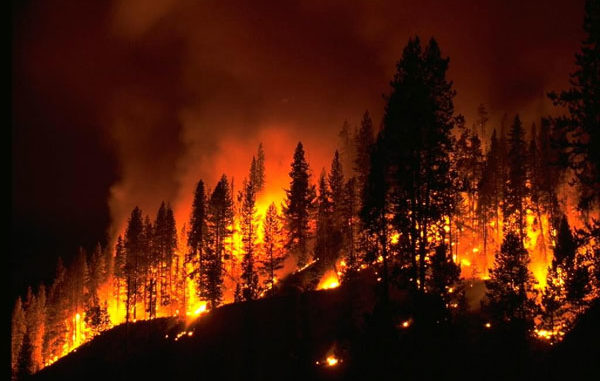
Crystal Lakes Volunteer Fire Department Compiles Answers To Questions
Crystal Lakes Volunteer Fire Department
There have been, over the course of the last couple of weeks, many questions about how the fire is being fought and why it wasn’t extinguished early on, etc. The Cameron Peak Fire management team has shared some answers to these questions on their Facebook page and in other updates, but I thought it might be useful to draw these answers together for those unable to access them directly and perhaps expand on them a bit.
In addition, lodgepole pine, in which the Cameron Peak fire is primarily burning, is notorious for producing ember storms, creating spot fires well ahead of the main body of the fire. This fire behavior, which they were seeing regularly on the fire before the snow, has the potential to trap any firefighters trying to create a fireline near the main body of the fire between that fire and a spot fire.
Finally, the fact that the fire is burning in rugged terrain increases the intensity of fire behavior. Fire burns faster uphill, its rate of spread increasing with the increasing steepness of the slope. Terrain features like saddles and chimneys augment this effect by channeling heat and wind. The more rugged the terrain, the faster the fire can move, even before the wind is taken into account. In addition to making the fire more unpredictable, this also means that firefighters may be literally unable to get out of the fire’s way fast enough.
Okay, so they have to fight indirectly. But why are the firelines they’re building so far from the fire?
This is a direct result of the rugged terrain and the thickness of the timber stands in the fire area. There are few areas that are clear enough to make it possible to build a fireline wide enough to have a chance of stopping this fire and accessible enough for firefighters and equipment to be able to get to them. In addition, the prevalence of beetle-killed timber in the area makes working there unsafe, with a large number of dead trees presenting fall hazards to anyone working in the area. In this terrain and with these fuels, roads are the only really accessible, available areas where firelines can be built (typically by widening and connecting them), and there are a limited number of roads through the fire area, especially between the fire and the Crystal Lakes/Red Feather lakes area. Rather than put firefighters in dangerous conditions where they’ll struggle to build a fireline that might not be completed before the fire reaches it (and may too narrow to hold even if it is completed), fire managers decided that their best option for success was to move out to areas where they could build strong lines safely and get them completed before they were overrun by the fire. This calculation has been changed somewhat by the lessening of fire intensity caused by the recent snow, and they’re currently looking for closer locations that they might be able to build lines.
Why aren’t they using all those helicopters they’ve got parked down the hill to lay down firelines? Or even to put the fire out?
Second question first — water isn’t typically a useful tool for extinguishing wildfires because of their size and temperature. There’s so much heat involved that, in any wildfire over a couple of acres and especially any fire burning in timber, it would take far more water to extinguish the fire than can reasonably be brought in.
Fire retardant is a useful additive that alters how effective fire is at burning the fuels the retardant has landed on, which can decrease fire intensity and slow its advance, but it cannot put the fire out. It only suppresses fire activity in an area temporarily — it’s the work of firefighters in creating firelines that contain and ultimately extinguishes wildfires, rather than retardant drops. Retardant is used to make it possible for firefighters to safely work closer to the edge of the fire, and dropping it in an area where firefighters are unable to work is a waste of retardant, fuel, and manpower. In addition, even if laying down enough water and retardant could extinguish the fire, it’s burning in areas that are so heavily wooded that the majority of the retardant is caught in the canopy and never reaches the ground, where the bulk of the fire is burning. This effect is also why the recent snowfall has slowed the fire but not extinguished it — a significant percentage of the snow never made it down to the ground where the fire is burning.
Fire managers are working to find places closer to the edges of the fire where they can build firelines and are also working on additional firelines (and beefing up existing firelines) between the fire and the Crystal Lakes/Red Feather Lakes area. The weather system this last week has given us a breather and firefighters a chance of catching this thing, but it’s still a threat to us and we all need to remain vigilant and prepared to evacuate.
For more information regarding the Crystal Lakes Volunteer Fire Department, visit: https://www.clvfd.org
Support Northern Colorado Journalism
Show your support for North Forty News by helping us produce more content. It's a kind and simple gesture that will help us continue to bring more content to you.
BONUS - Donors get a link in their receipt to sign up for our once-per-week instant text messaging alert. Get your e-copy of North Forty News the moment it is released!
Click to Donate
